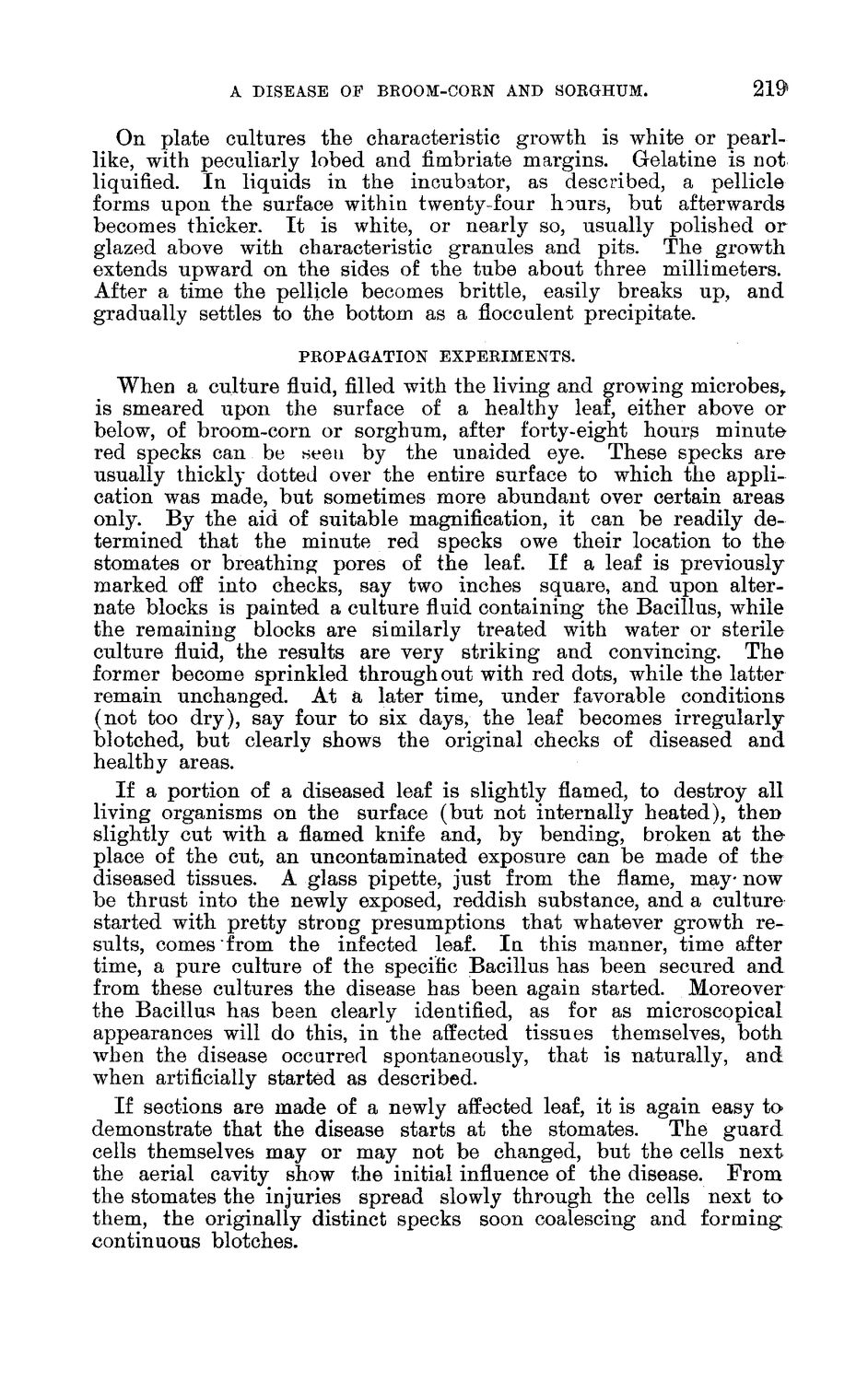| |
| |
Caption: Board of Trustees Minutes - 1888
This is a reduced-resolution page image for fast online browsing.

EXTRACTED TEXT FROM PAGE:
A DISEASE OF BROOM-CORN AND SORGHUM. 219 On plate cultures the characteristic growth is white or pearllike, with peculiarly lobed and fimbriate margins. Gelatine is not liquified. In liquids in the incubator, as described, a pellicle forms upon the surface within twenty-four hours, but afterwards becomes thicker. I t is white, or nearly so, usually polished or glazed above with characteristic granules and pits. The growth extends upward on the sides of the tube about three millimeters. After a time the pellicle becomes brittle, easily breaks up, and gradually settles to the bottom as a flocculent precipitate. PROPAGATION EXPERIMENTS. When a culture fluid, filled with the living and growing microbes, is smeared upon the surface of a healthy leaf, either above or below, of broom-corn or sorghum, after forty-eight hours minute red specks can be seen by the unaided eye. These specks are usually thickly dotted over the entire surface to which the application was made, but sometimes more abundant over certain areas only. By the aid of suitable magnification, it can be readily determined that the minute red specks owe their location to the stomates or breathing pores of the leaf. If a leaf is previously marked off into checks, say two inches square, and upon alternate blocks is painted a culture fluid containing the Bacillus, while the remaining blocks are similarly treated with water or sterile culture fluid, the results are very striking and convincing. The former become sprinkled throughout with red dots, while the latter remain unchanged. At a later time, under favorable conditions (not too dry), say four to six days, the leaf becomes irregularly blotched, but clearly shows the original checks of diseased and healthy areas. If a portion of a diseased leaf is slightly flamed, to destroy all living organisms on the surface (but not internally heated), then slightly cut with a flamed knife and, by bending, broken at t h e place of the cut, an uncontaminated exposure can be made of t h e diseased tissues. A glass pipette, just from the flame, may* now be thrust into the newly exposed, reddish substance, and a culture started with pretty strong presumptions that whatever growth results, comes from the infected leaf. I n this manner, time after time, a pure culture of the specific Bacillus has been secured and from these cultures the disease has been again started. Moreover the Bacillus has been clearly identified, as for as microscopical appearances will do this, in the affected tissues themselves, both when the disease occurred spontaneously, that is naturally, and when artificially started as described. If sections are made of a newly affected leaf, it is again easy to demonstrate that the disease starts at the stomates. The guard cells themselves may or may not be changed, but the cells next the aerial cavity show the initial influence of the disease. From the stomates the injuries spread slowly through the cells next to them, the originally distinct specks soon coalescing and forming continuous blotches.
| |